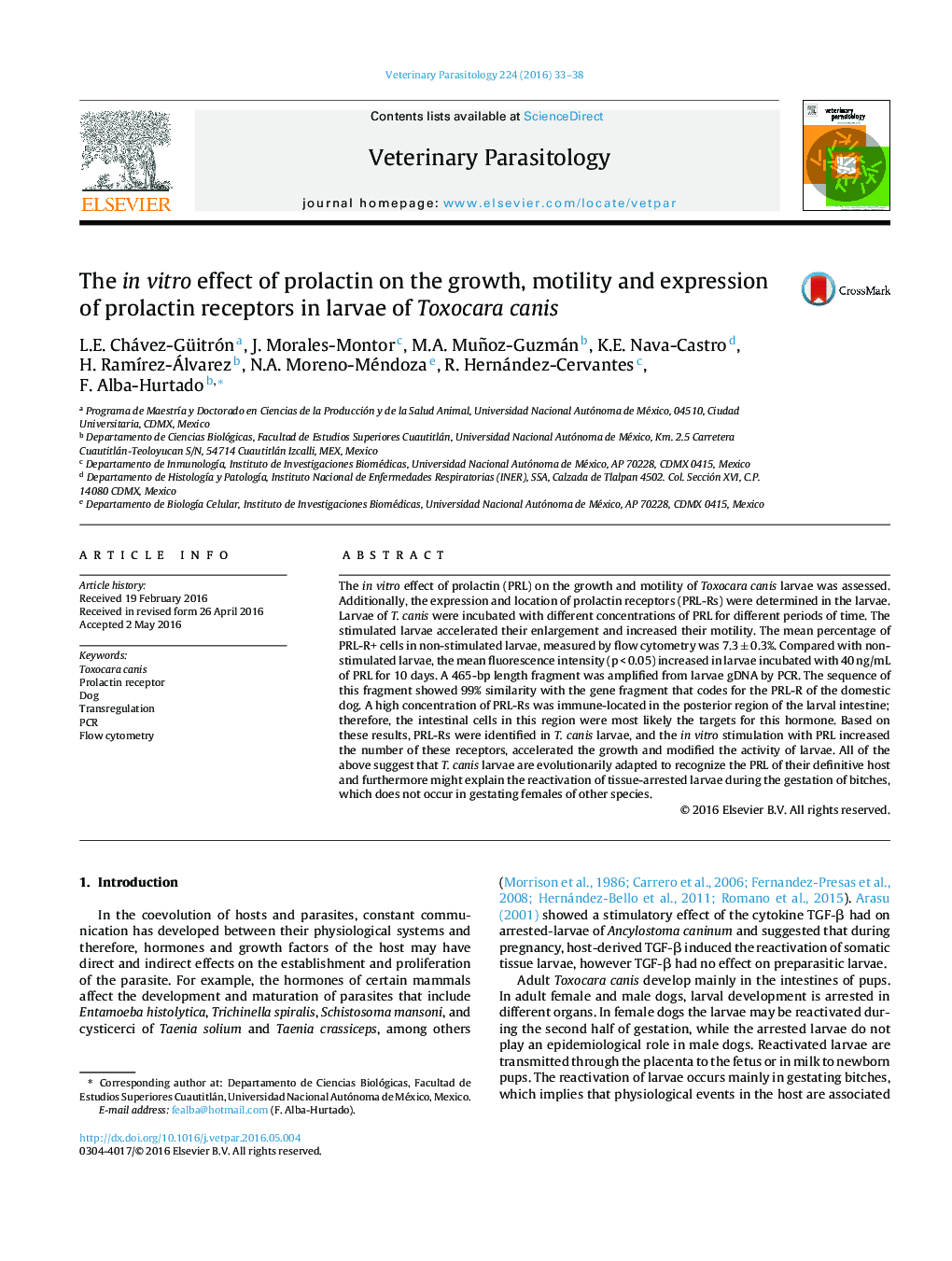| کد مقاله | کد نشریه | سال انتشار | مقاله انگلیسی | نسخه تمام متن |
|---|---|---|---|---|
| 2469818 | 1555652 | 2016 | 6 صفحه PDF | دانلود رایگان |

• Prolactin treatment in vitro increased growth and motility of Toxocara canis larvae.
• Cells of Toxocara canis larvae have prolactin receptors-like protein.
• Prolactin receptors-like were localized in the intestine of the Toxocara canis larvae.
• Toxocara canis has a DNA fragment like dog’s prolactin receptor gene.
The in vitro effect of prolactin (PRL) on the growth and motility of Toxocara canis larvae was assessed. Additionally, the expression and location of prolactin receptors (PRL-Rs) were determined in the larvae. Larvae of T. canis were incubated with different concentrations of PRL for different periods of time. The stimulated larvae accelerated their enlargement and increased their motility. The mean percentage of PRL-R+ cells in non-stimulated larvae, measured by flow cytometry was 7.3 ± 0.3%. Compared with non-stimulated larvae, the mean fluorescence intensity (p < 0.05) increased in larvae incubated with 40 ng/mL of PRL for 10 days. A 465-bp length fragment was amplified from larvae gDNA by PCR. The sequence of this fragment showed 99% similarity with the gene fragment that codes for the PRL-R of the domestic dog. A high concentration of PRL-Rs was immune-located in the posterior region of the larval intestine; therefore, the intestinal cells in this region were most likely the targets for this hormone. Based on these results, PRL-Rs were identified in T. canis larvae, and the in vitro stimulation with PRL increased the number of these receptors, accelerated the growth and modified the activity of larvae. All of the above suggest that T. canis larvae are evolutionarily adapted to recognize the PRL of their definitive host and furthermore might explain the reactivation of tissue-arrested larvae during the gestation of bitches, which does not occur in gestating females of other species.
Figure optionsDownload as PowerPoint slide
Journal: Veterinary Parasitology - Volume 224, 15 July 2016, Pages 33–38